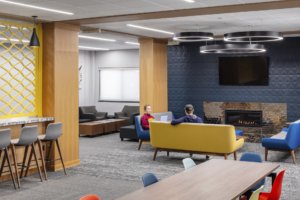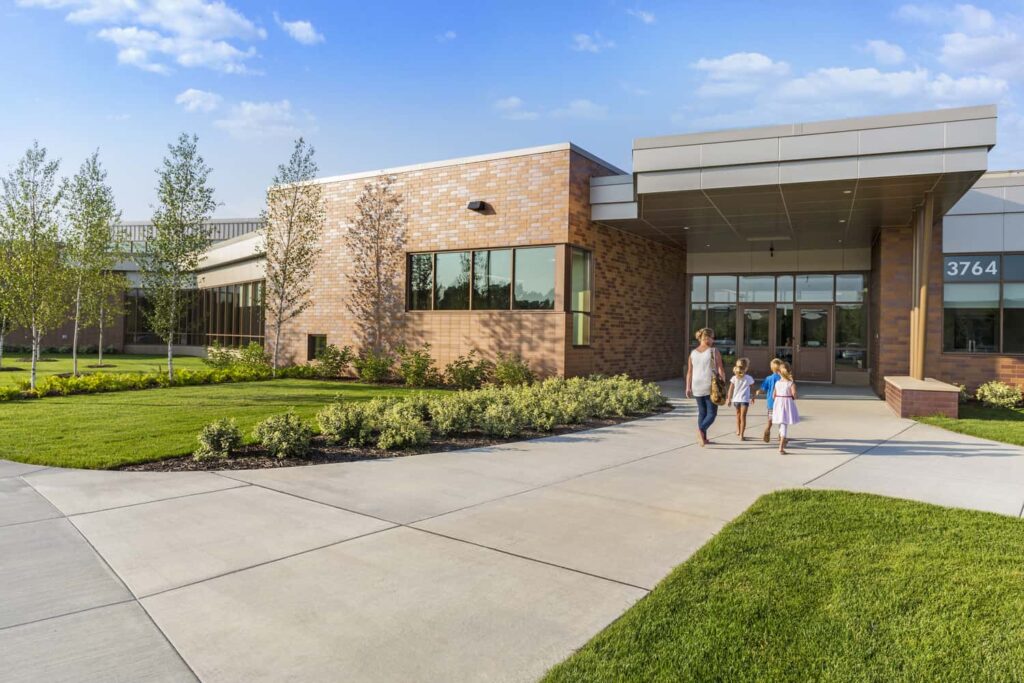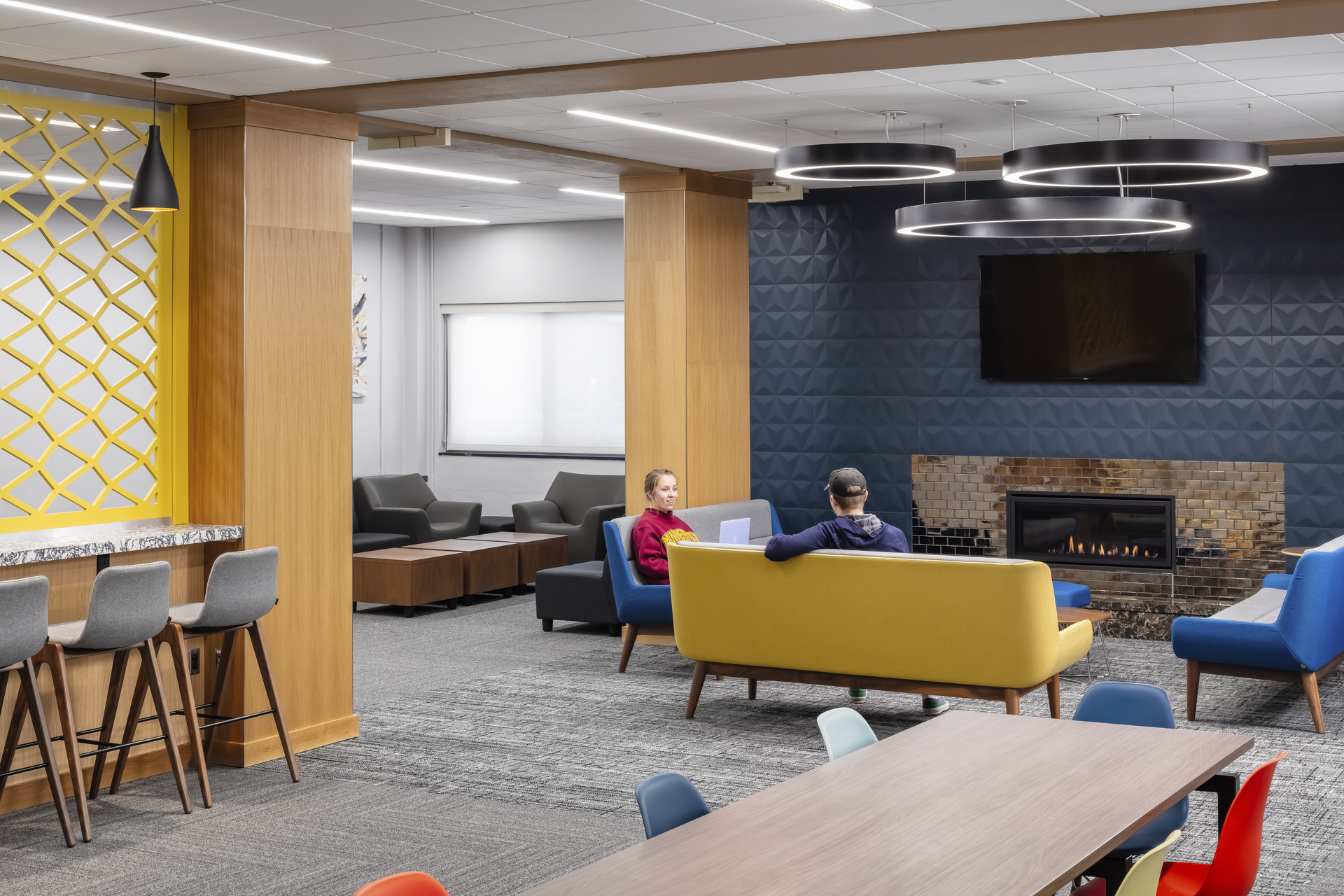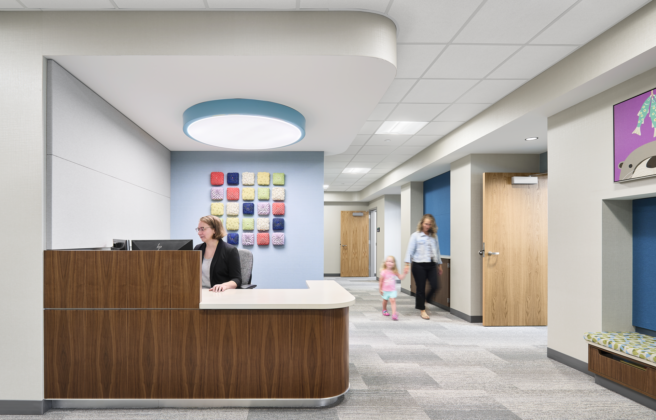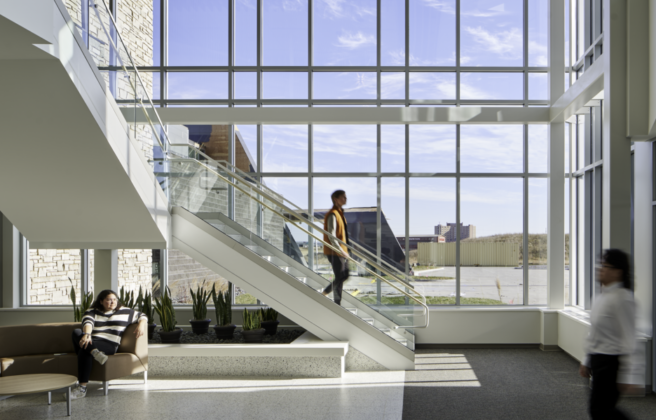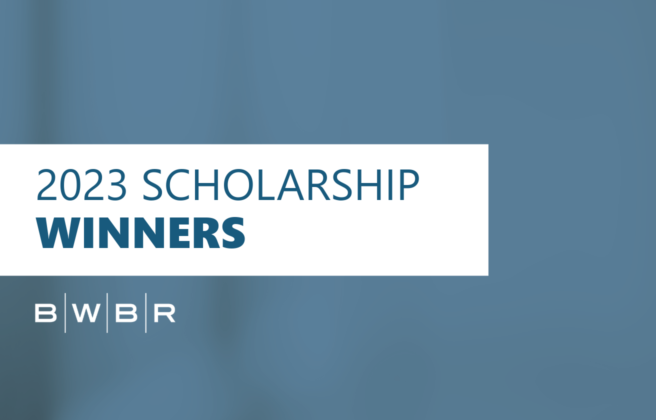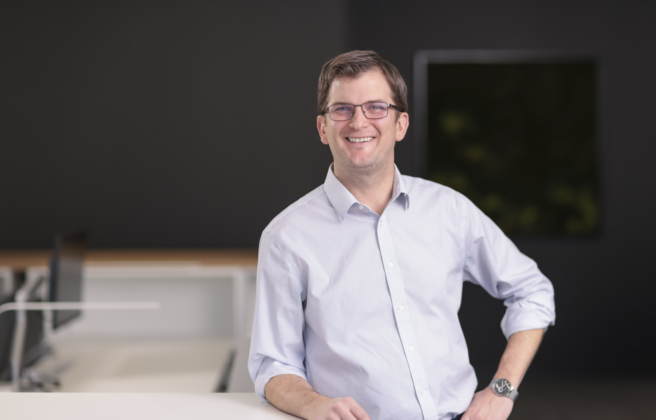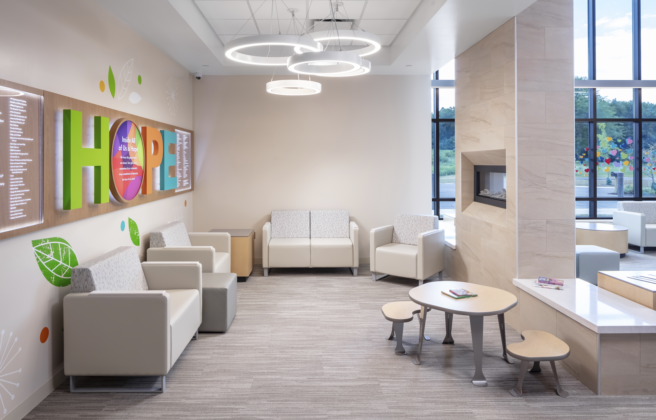Back in 2013, Hanna Kuehl, CID, LEED AP, Steve Berg, AIA, and the team at BWBR were given a brand-new challenge: to reimagine a special education environment. I had the pleasure of sitting down with them for a behind-the-scenes look at how it all came together.
First came the research. The team reviewed case studies and evidence-based reports to uncover the elements of an ideal special education environment, which proved difficult but left a big opportunity to lead the industry and help set a new standard. They toured existing spaces to gain a deeper understanding of the problems that needed solving. They also held visioning workshops, a highly collaborative process that engaged staff, teachers, administration, and most importantly, students.
“This served as a way for us to really begin the process of identifying what the hopes and dreams of all of these individuals are for a state-of-the-art facility like this,” Berg said. “And also, what are some of the fears and the challenges that they’ve had through working in these environments?”
The team surfaced a wealth of “stories and struggles,” and underwent an “immersion process” that embedded them in the student environment. They wanted to experience firsthand the functionality of the space, and to map out how students transition throughout their day and the hurdles they encounter.
“Ironically, many of the design features are nearly invisible when you step inside one of these school facilities. And that’s frankly OK,” said Berg. “Reducing environmental stimuli is so important for this student population. So, looking at how can we improve the HVAC systems to minimize sound and triggers for students, enhancing the lighting environment — simple things that mean so much and improve the daily lives and educational growth of students. So, we start there.”
The team continued to take important cues from a behavioral health standpoint in featuring not only better ways for students and staff to navigate the physical space, but also to navigate the school day itself.
In addition to an enhanced fire alarm system that uses a calm voice rather than a blaring horn and strobe light, BWBR swapped traditional linear corridors for more meandering pathways. The team placed breakout rooms near classrooms that students can choose to use to self-regulate, read a book, or look at nature.
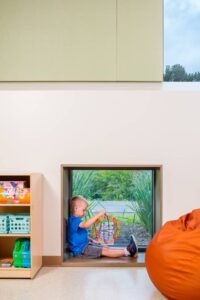
Elements like purposeful visual cues in hallways to ease transition times, specialized door locking hardware, and card readers to save staff the trouble of fumbling for keys all made for a safe and easy-to-use facility. Safety is especially crucial for students who sometimes feel out of control in their bodies and experience elopement, which occurs when a student leaves the supervision of their teacher.
Elopement is a familiar concept to me because my son has special needs and attends one of the BWBR-designed schools. My kiddo elopes when he gets upset. This behavior can endanger his safety, so the locks remove that option. My son actually told me that he likes knowing this because it means that elopement is not an option. It gives him a sense of security that he can’t put himself in danger.
A Therapeutic Learning Environment is About More Than Adaptability and Safety — It’s About Belonging
For my son, a truly well-equipped therapeutic learning environment is the difference between isolation and connection. He enjoys being part of something bigger, rather than feeling separated from the rest of the population. His biggest struggle in life is feeling different, which a lot of these kids probably struggle with.
While the BWBR team centered students’ safety and comfort, the needs of their especially caring and devoted teachers and staff were also a big priority. Berg described “a space that is truly dedicated for staff for their self-care.” He said, “Everyone has challenges throughout the day, throughout the week, and to have a safe place to go is so incredibly important. So, simple break rooms and a place to collaborate with your peers is greatly needed. But also, special rooms that are just quiet and a place of respite. So, instead of going to your car to get away from a situation that may have happened, now you have a comfortable place to be, and a safe place to be.”
Elements Repeated, Identities Shaped, and the Future of Design for Special Education
The BWBR team has repeated a number of elements to reiterate their success in therapeutic learning environments, including durable materials that don’t off-gas as much and produce less odor and disruption, access to daylight to stay connected to nature, and an entry sequence that ensures a secure path with proper locking mechanisms.
Perhaps one of the most surprising and inspiring developments carried forward from that first 2013 project was how BWBR helped the school create a sense of identity and pride where there was only stigma. The uniqueness of the school’s nature-based environment was reinforced through images, language, colors, and the names of the spaces. It even morphed into a butterfly mascot and logo.
“We heard stories of many students that needed to go and visit the butterfly every day. That was part of their path, that was part of their journey, that they went and traced it with their fingers, and were able then to start their day and move on.”
Hanna Kuehl
Mascots are traditionally seen in general education settings. The BWBR team saw no reason that a special education community should feel any less proud or connected to an identify than any other school.
“There was one student that was so connected to that and had such a success story in this new environment that his parents got him a letter jacket with the school name on it,” said Kuehl. “And he wore it to school every day with such pride on his face because he found his place, he found his area of success, and was so proud to share that with everyone. And that is just so heartwarming for us to understand that architecture and design can really lead to influencing people’s lives like that.”
My son is proof of that influence. To families like mine, the kind of research, creativity, and compassion that went into the design of his school make all the difference. BWBR closely tracks the policies that govern special education sites, which are thankfully evolving to meet the real-world needs of students, teachers, and staff. For now, research remains key to achieving the shared goal of continuous improvement. Post-occupancy surveys help BWBR understand the elements that best support therapeutic environments and the specialized spaces that make them successful.
The team continues to study how design influences behavior, how teachers use the spaces, and how some of what they’ve learned from special education might help make other environments more functional and inclusive. Kuehl said, “Our hope for the future of this and other environments is just to create a more welcoming and flexible space for all users.”

